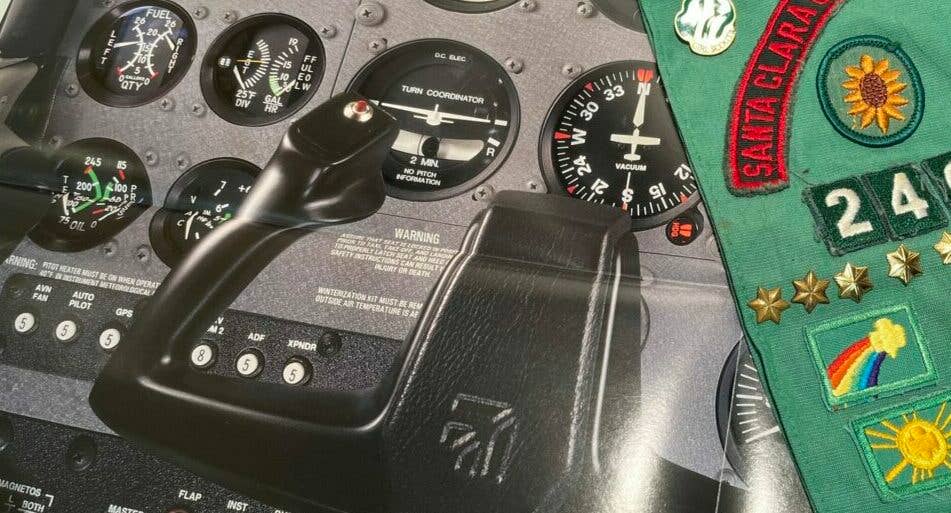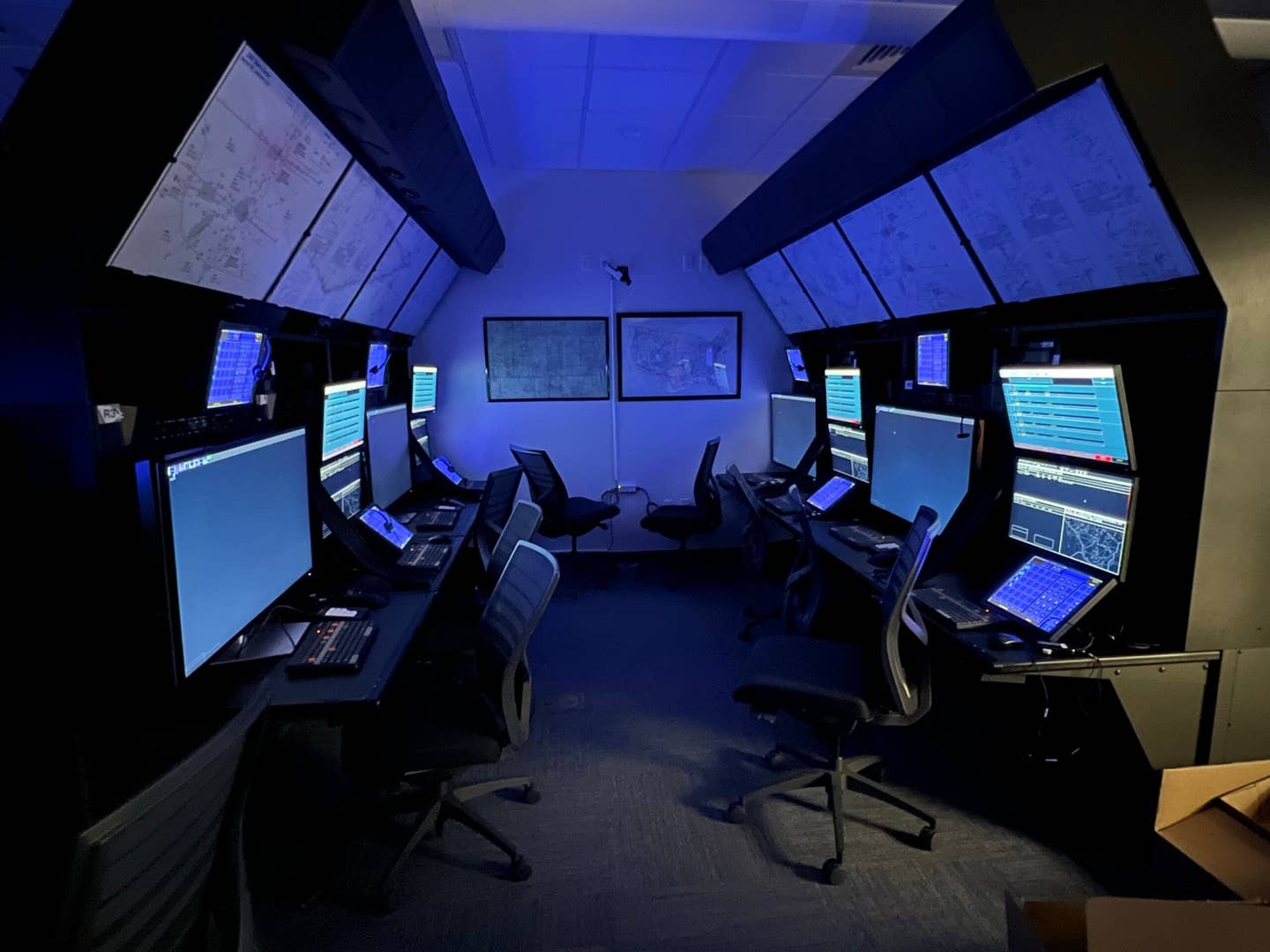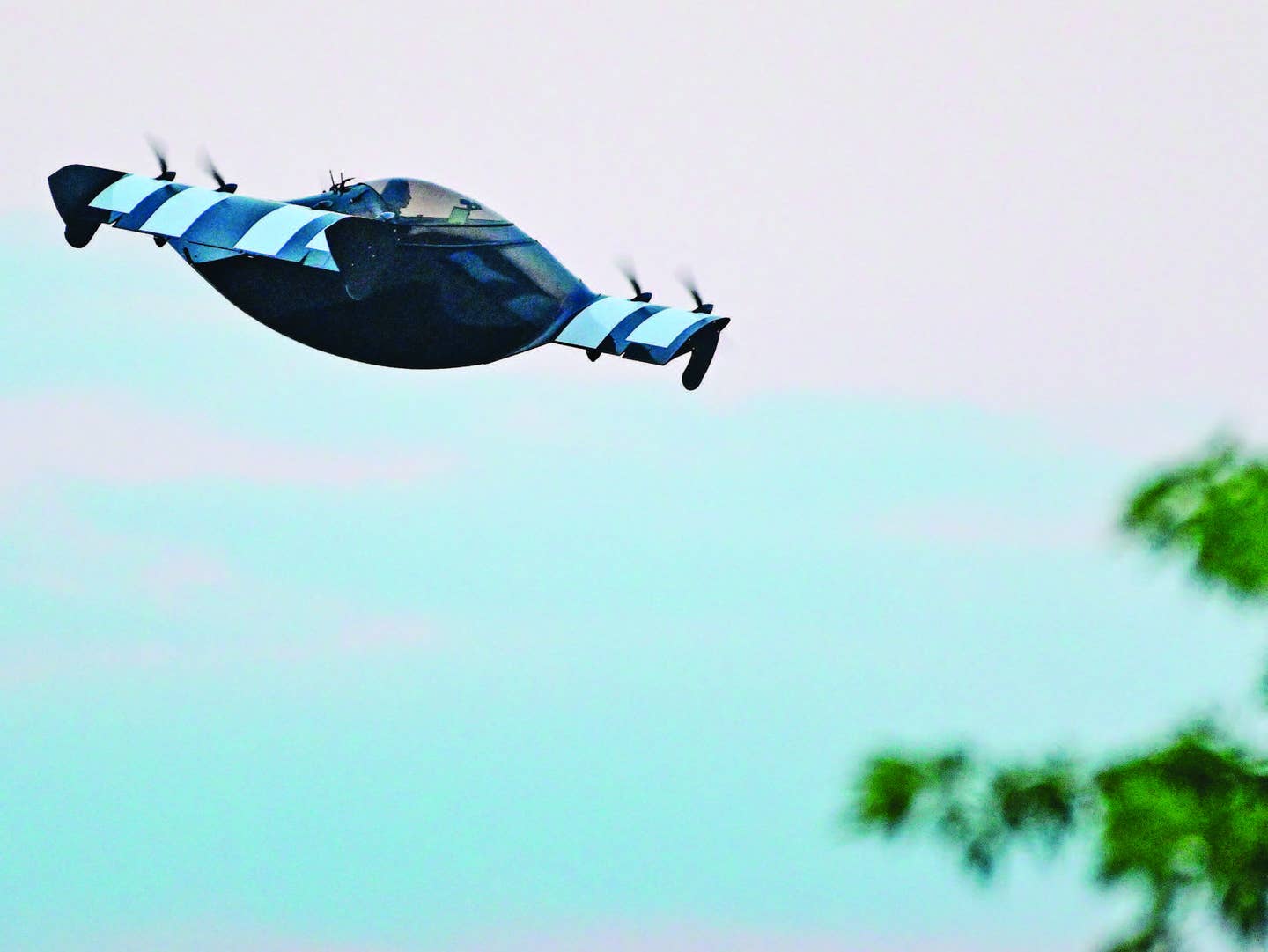Petition Aims To Let Girl Scouts Fly
An Ambassador Scout has launched a campaign to persuade the Girl Scouts of America to change their no-fly policy.

The Girl Scout aviation badges are more academic, requiring the scout to do research, but no flying. [Credit: Meg Godlewski]
One of the messages that Girl Scouts of America tries to impart is that gender does not have to be a barrier. Girl Scouts, just like Boy Scouts, have the opportunity to learn wilderness skills, perform community service and learn about science and technology.
There is, however, one thing Boy Scouts are allowed to do that Girl Scouts are not: fly in small aircraft as part of an aviation badge.
In scouting, merit badges are created and approved by local councils, and earned by performing a series of tasks to learn new skills. The badges are displayed on the scout uniform on either a sash or vest. The Boy Scouts have aviation badges that include taking a flight in a small aircraft as a requirement.
The Girl Scout aviation badges are more academic, requiring the scout to do research, but no flying. This does not sit well with Autumn Pepper Rhodes, a Girl Scout Ambassador from the Gulf Coast of Florida.
Rhodes, who earned her private pilot certificate at 17, has launched a campaign to persuade the Girl Scouts of America to change their no-fly policy. Rhodes drafted a petition as part of her Gold Award project, "Girls Who Soar."
The Gold Award is the highest award in Girl Scouts. It is designed for girls in the ninth through 12th grades who are registered as Girl Scout Seniors or Ambassadors. The award is meant for girls who find meaningful ways to address issues facing their communities, and act on them, resulting in a change for the better.
According to Rhodes, "Girls Who Soar" is designed to "encourage, educate, and inspire girls in my community to pursue aviation," Rhodes explains. "Less than 9 percent of the pilot population are women. I decided to become a pilot when I was 10 years old. I had my first discovery flight with Experimental Aircraft Association (EAA) Chapter 66 and immediately knew flight would be my future."
Rhodes noted the gender disparity in scouting when she was 11 and her troop attended Aviation Discovery Day at the Sun ‘n Fun aerospace education campus in Lakeland, Florida. There were several Boy Scout troops in attendance and only one Girl Scout troop.
"One of the activities provided were free discovery flights in a small aircraft," Rhoades recalls. "While there were multiple Boy Scouts lined up to fly without parents present, only the girls who had a parent onsite were eligible to fly, as flights in a small aircraft were not allowed per the Girl Scout safety checkpoints.”
According to Rhodes, when she announced she wanted to be a pilot, some adults reacted with amusement. At the time, the Girl Scouts did not have any aviation merit badges, and this petition seeks to change that by establishing an Aviation Exploration badge for cadets, seniors, and ambassadors. To earn the badge, the girls must engage in hands-on activities to learn about aviation. One of these activities will be a short flight in a small aircraft, similar to the EAA's Young Eagles flights, which provide aviation opportunities to children ages 8 to 17.
The petition is specific, calling for the implementation of a waiver for guardians of a Girl Scout over the age of 13 to sign, allowing the girls to participate and fly in the private aircraft for academic and educational purposes. The flight must be within 25 miles of the home airport with no stops along the route. The pilot must be over 21 years of age, have a current medical and at least a private pilot certificate, 500 logged flight hours, and be current to carry passengers. Background checks should be done on the volunteer pilots that choose to work with the Girl Scouts or through collaborative programs.
FLYING made multiple attempts to reach the media office for the Girl Scouts of America; however, our phone calls and emails were not returned by press time.
The Girl Scouts & Aviation
This is not the first time aviation has been introduced to the Girl Scouts.
In 1941 the GSA created the Wing Scout Program for older girls who were "interested in flying and wanting to learn enough about aviation to serve their country." When the United States entered World War II, this program became more important, and many of the girls who participated went on to become members of the Women Airforce Service Pilots.
According to Rhodes, after the war it evolved into the Senior Wing Scout Fliers that allowed the girls to earn their pilot certificates.
"Though the program was phased out in the 1960s, there is no reason why a modernized version could not be revived with the current emphasis on STEM (science, technology, engineering and math)," says Rhodes.
Although the Wing Scout program was dissolved by the 1970s, aviation references were still part of scout culture. In the 1970s the ceremony where brownies, girls in the 1st through 3rd grade— transitioned to junior scouts was known as the "Flying Up ceremony." The scouts who made the transition were given a pair of gold wings to display on their sash.

Sign-up for newsletters & special offers!
Get the latest FLYING stories & special offers delivered directly to your inbox






